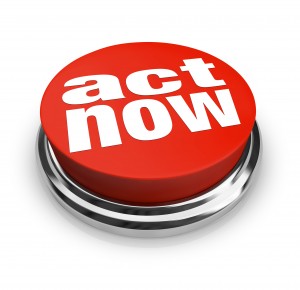 It’s all very well generating hoards of A1 quality traffic, but if you’re sending it to a ‘dogs dinner’ of a landing page, you may as well shut up shop and go get a proper job. After all, having bad landing page design is equivalent to having none at all. Instead, consider your landing page your sales pitch, whether you’re going after the lead, the sale, (or both), you have one opportunity, and one opportunity only to convince the reader to sign-up and/or buy the product. Failure to impress the first time, and all that time and money you've just spent on traffic and site design, has just been flushed down the pooper.
It’s all very well generating hoards of A1 quality traffic, but if you’re sending it to a ‘dogs dinner’ of a landing page, you may as well shut up shop and go get a proper job. After all, having bad landing page design is equivalent to having none at all. Instead, consider your landing page your sales pitch, whether you’re going after the lead, the sale, (or both), you have one opportunity, and one opportunity only to convince the reader to sign-up and/or buy the product. Failure to impress the first time, and all that time and money you've just spent on traffic and site design, has just been flushed down the pooper.
Even the very best landing pages need to follow a simple set of rules to do their job effectively. However, this whole process, (even for some of the most experienced markers), is sometimes easier said than done—so here are my 11 top tips for effective landing page design to really maximise those conversions.
#1 First, don’t forget the most critical elements. A landing page is used to convert a visitor into a lead through the completion of a transaction, or by collecting contact information. Therefore it’s an absolute must, to include the following elements as standard practice:
- A headline (and an optional sub-headline, when necessary),
- A concise description of the offer (that emphasises clearly on its value).
- At least one related image of the product or giveaway.
- Optional elements that will support the offer (such as security badges and testimonials).
- Opt-in form (above the fold) to collect visitor information.
#2 Remove site navigation. You want the visitor to have two simple choices. Either stay and sign-up, or leave. Anything else is a distraction. If you really must have a menu, then place it at the bottom of the page.
#3 Match the headline and the corresponding call-to-action. Keep your headline’s message consistent with your call-to-action (CTA). If your message isn’t honest and confusion-proof, people will get annoyed and disappointed, meaning they’re just not going to convert.
#4 Keep it simple. Identify only the elements that are essential to your landing page— remember, you don’t have to put everything in one single page. Take advantage of white space, and make sure that the fonts that you use are legible. Keep everything direct and concise.
#5 Emphasise the value of the offer. Use short paragraph’s or bullet points to highlight the benefits and advantages of your offer so the visitor is compelled to take it.
#6 Social sharing is good. Include buttons to enable your prospects to share your content and offers in their own online social networks.
#7 The more, the merrier. Increasing the number of landing pages naturally increases your chances of generating more leads, (even if you’re offering the same thing multiple times). For example, I use one, two, three different landing pages for my Online Success Complete Cash Blueprint, even if some of the changes for each are only slight.
#8 Stick to the basics. Make sure that you collect only the essential information needed to qualify needs, so as not to clutter your page.
#9 Nuance matters. The word ‘submit’ might be off-putting to some people—use a statement that will relate to what your prospects will be getting from your landing page. For example: “get your free brochure kit!”
#10 Make your visitors feel secure. More and more people are becoming paranoid online, especially with their personal information. Add some security features to your landing pages to help your visitors feel more secure. You can put in a privacy message (or a direct link to your privacy policy) that says the information will not be shared or sold. Security seals, certifications, and testimonials also work extremely well.
#11 Shorter is better. Make your form appear shorter so that your visitors won’t be put off by too much text. A good balance for visitors and SEO when creating a landing page is around 300-350 words. It may sound like a lot, but it isn’t, (for example this blog post is more than double that).
If your landing page really isn't delivering the results you want, then you might want to consider a professional design. If you don't have the skills yourself but are willing to learn you might want to consider something simple like Optimizepress or Leadpages. Or if you have less time but more of a budget you can get it done for you from a freelancer site such as Elance, Odesk or Freelancer.
Paul Graham

Paul Graham Online.com


Follow Me!